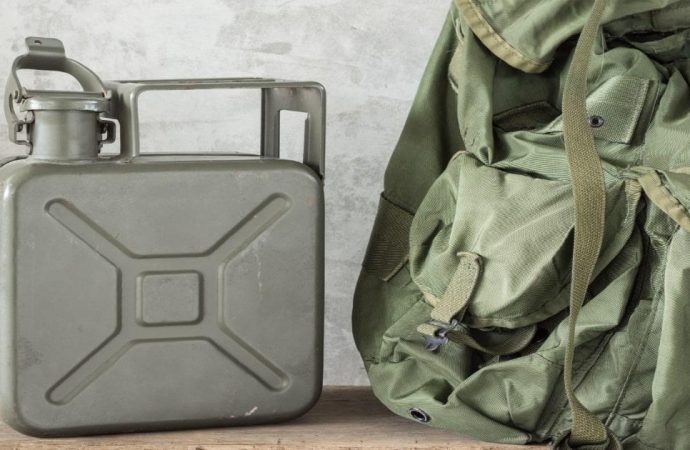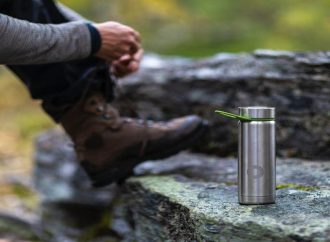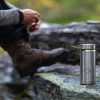Like electricity, fuel is an absolute necessity in the modern world – and in a SHTF scenario, it’s the same, but to a much greater extent. From powering your cars, generators, cooking equipment and other essential equipment, you can’t afford to let it go to waste. Regular petrol lasts between three and six months, and
Like electricity, fuel is an absolute necessity in the modern world – and in a SHTF scenario, it’s the same, but to a much greater extent. From powering your cars, generators, cooking equipment and other essential equipment, you can’t afford to let it go to waste.
Regular petrol lasts between three and six months, and you’re going to want to aim for the latter option here, which is why we’ve put together a handy guide for how you can maximise the shelf life of your fuel.
This is a guide suitable for both bugging in and bugging out. So be careful, think efficiently, and you’ll be able to last much longer than if you don’t know how to store fuel for the long term, in a SHTF scenario.
Some preppers might think it’s not essential to store fuel, but should the supply run short, or the prices go through the roof due to a supply issue, then you’ll be the one having the last laugh when everyone else is paying over £2 per litre or siphoning from other cars.
What’s more, you might even need that extra 40L you’ve stored in a metal jerry can to get you to your bug out location on top of your already full tank.
Select A Proper Container
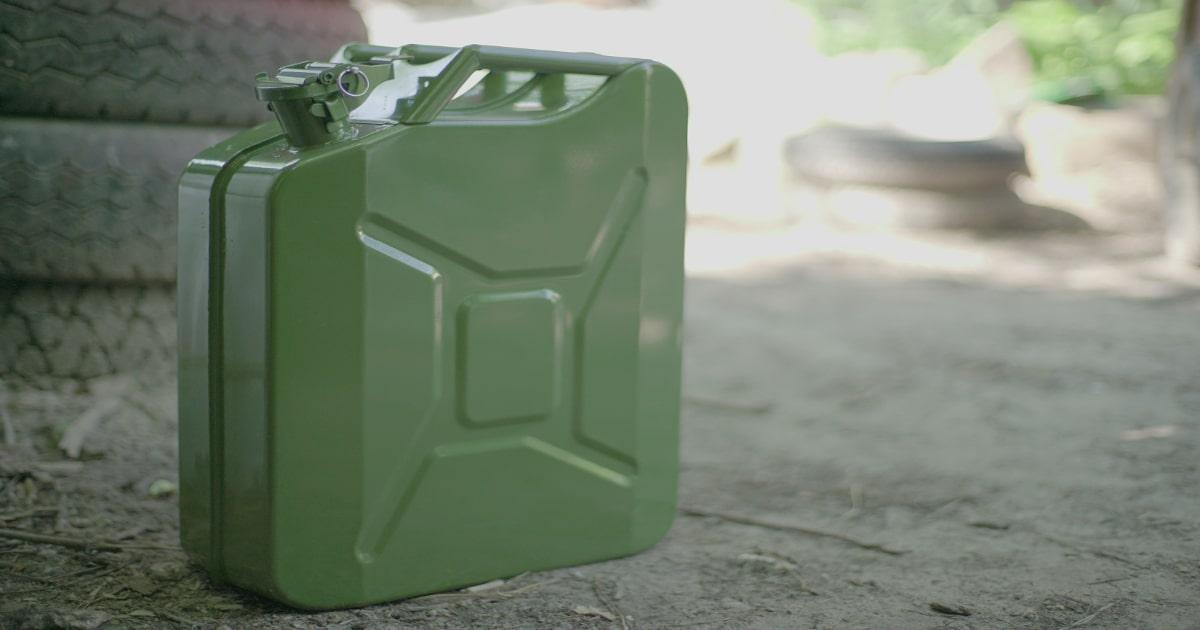
Petrol, or fuel, is an incredibly volatile liquid and as such it must be treated accordingly. It’s no secret that it’s highly flammable, and you must avoid storing it in a container that has a risk of flames.
Plastic containers don’t come highly recommended, even thought they are good for short term use such as if you’ve broken down, as they can build up static – and the wrong spark at the wrong time will result in a towering inferno, destroying your fuel cache, nearby possessions, and putting your own life at risk.
Fire codes recommend not storing more than 25 gallons of fuel at a time. This is around 113 litres, and it’s unlikely you’ll need this much unless you’re running a petrol generator or using a car frequently.
So think in the long term and be sensible, and you should be alright with around 30 to 50 litres instead, especially if you have other equipment set up like a domestic wind turbine, or solar panels.
We recommend using metal jerry cans to store your fuel. They’re relatively cheap, coming in at around £30 and storing 20L each, and they’re trusted – that’s why you see them at petrol stations and garage supply stores rather than plastic containers.
Get two of them and you have your 40L of fuel ready to go when you need it, which is about 3/4 of the tank of a regular car. If you have an SUV you may want to store an additional 20L.
It’s safer to have a higher amount of small containers, rather than a small amount of high volume containers. Don’t store all your fuel in one place as if there is a fire you’ll lose it all, choose multiple safe locations.
If you are looking to keep a high volume of fuel in one container, then you should consider an above ground fuel tank. Although these are expensive, and will run into the thousands of pounds, they’re made of the strong, reliable materials you need for running a generator long-term.
They come in a variety of volumes to accommodate all, even if you’re looking to go over the experts’ recommended amounts.
Where To Store Fuel
Current guidelines from the Health and Safety Executive state you can store up to 30 litres of fuel without letting the Petroleum Enforcement Authority know – yes, that’s a real thing. However, when SHTF, these rules will probably go out the window, as there’ll be much more things for governments to worry about than if you have a few litres of extra petrol at your property, if they’re even still up and running.
The same bodies have rules on where to store it, and we agree with these as they’re all regarding your own personal safety.
Don’t keep it in your living accommodation, as this puts you at a constant high risk for no real reason. Admittedly, if you’re bugging out, you can be at risk from having it stolen by someone who also needs it, but if you hide it, like everything else, you should be fine.
When you go to pour the petrol, once again, make sure you pour it outside, as there can be unseen spills that lead to fire hazards. There’s also vapours that come with pouring petrol, which are toxic if inhaled in excess, providing another reason why you should keep it outside.
If you’re largely storing petrol for your vehicle, then keeping it in or on the vehicle itself is one idea. This will take up no new space, and you’re ready to go if you ever need a fast escape.
We’d recommend keeping it in your outside shed though so it’s not being jostled around every time you drive. It also provides all the essential elements for a storage location – dry, reasonable location, and a minimal risk of it catching fire. Under the current rules, this also does count towards your allocation.
A cool location is perfect as well, as it’s the most reasonable, middle ground temperature. In the UK climate, it’s also the most accessible, too.
How To Store Fuel For Bugging In & Out
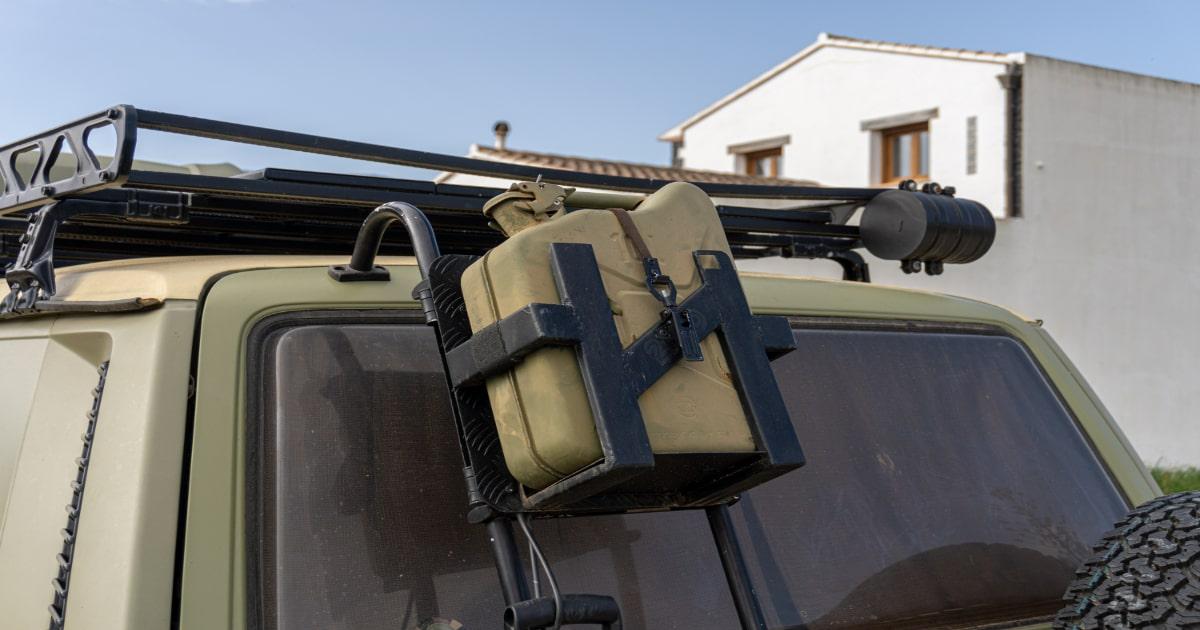
One of the main issues you’ll have to deal with is how you can transport it with you. If you have a vehicle you’re planning to bug out in, then you’ll need fuel – and likely vice versa.
It’s the ideal space to keep it in the back of your car, or in the back of your truck if you really are living up to your prepper name. Some models can even have a special rack fitted to carry a couple of metal jerry cans, which could make all the difference when you need to go those extra few miles to your bug out location.
Those bugging out don’t have many options for their fuel storage if carrying it by hand, as liquid is heavy. Essentially, you’ll need to make sure it’s hidden, and try to keep it in the most suitable climate possible – one that’s warm and dry. But if you’re bugging out on foot, what do you really need fuel for anyway, not your car or generator.
When you’re bugging out, you don’t have a lot of choices for your fuel. However, when you’re bugging in, you can follow all the guidelines above and as a prepper you can get all the essential equipment in the current world, rather than waiting for SHTF.
A fuel storage cabinet is perfect, as you can stack a lot, and they’re made of strong metals that are hard to break into. What’s more, they’re almost guaranteed to come with a lock, and you can keep this key on you for maximum security. It wouldn’t hurt to camouflage or hide the stash, either.
Summary
As you can see, there’s a number of ways you can store fuel, none of which are complex, but they all make a huge difference. If you’ve failed to prepare and you need fuel for your generator or vehicle, then you can always borrow some from another vehicle by siphoning fuel.
The main thing to look out for is the environment that it’s in – as long as it’s warm and dry, with minimal risk of static and kept away from yourself and anyone in your party, then you should be good to go. Your next mission is to calculate how much you need.

